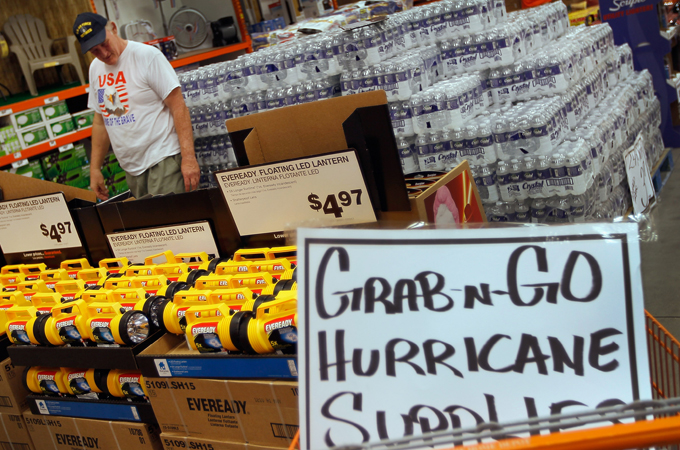Hurricane Irene keeps forecasters guessing
The Atlantic’s first hurricane continues on an ever changing path

 |
| Residents prepare for the possible arrival of Hurricane Irene [Getty Images] |
Hurricane Irene continues to keep forecasters on their toes. In the four days that the storm has been on the maps, there have been over a dozen altered tracks.
On Sunday, Haiti was put on alert that Irene could be making landfall on its southern cost. By Monday evening though, Hurricane Irene was actually tracking north of Haiti’s shared island of Hispaniola. Even though storm surge, flooding and power outages were widespread, a bullet was dodged.
Keep reading
list of 4 items‘Mama we’re dying’: Only able to hear her kids in Gaza in their final days
Europe pledges to boost aid to Sudan on unwelcome war anniversary
Birth, death, escape: Three women’s struggle through Sudan’s war
Earlier this week, the longer range forecast track was also putting the eastern coast of Florida and Georgia on guard for a potential landing of Hurricane Irene. But with each six hour running of the computer forecast models, the track has continued to edge more toward the east and away from the southern US coast and also Nassau.
Currently Hurricane Irene is making its way out of the waters of the Turks and Caicos Islands and will soon be crossing over the eastern Bahamas. The intensity is expected to increase to a category 3 storm, making it a major hurricane.
By Saturday afternoon it looks as if Irene will be at it closest point to the US coastline, skirting the outer banks of Cape Hatteras, North Carolina. Even though a direct hit could potentially be averted, the effects of the storm will not. Storm surge of up to four metres are likely to be seen from the coast of North Carolina up to the northeastern states of New York, Massachusetts and Rhode Island.
While the southern United States are more accustomed to dealing with these storms, the northern states are not. Evacuation routes are not well established to the metropolitan chain of cities in the northeast. And based on the few previous storms that have made it that far north, power outages tend to be widespread and long lasting.